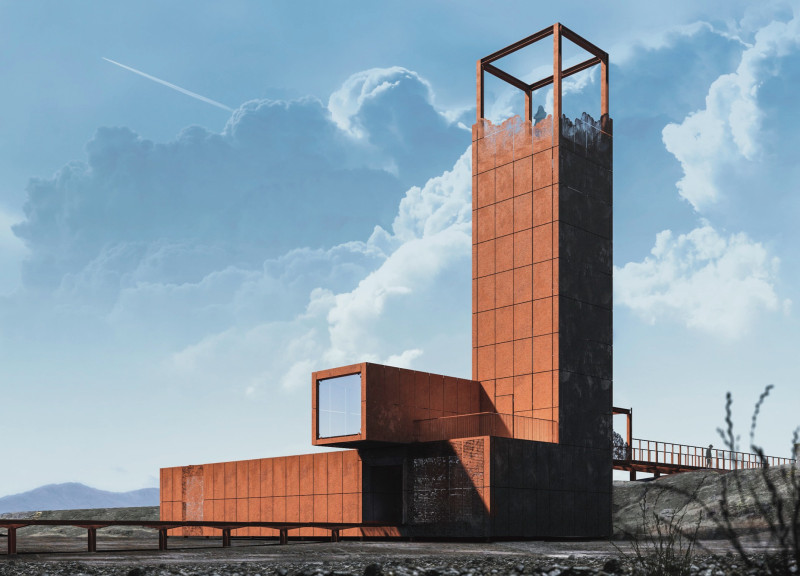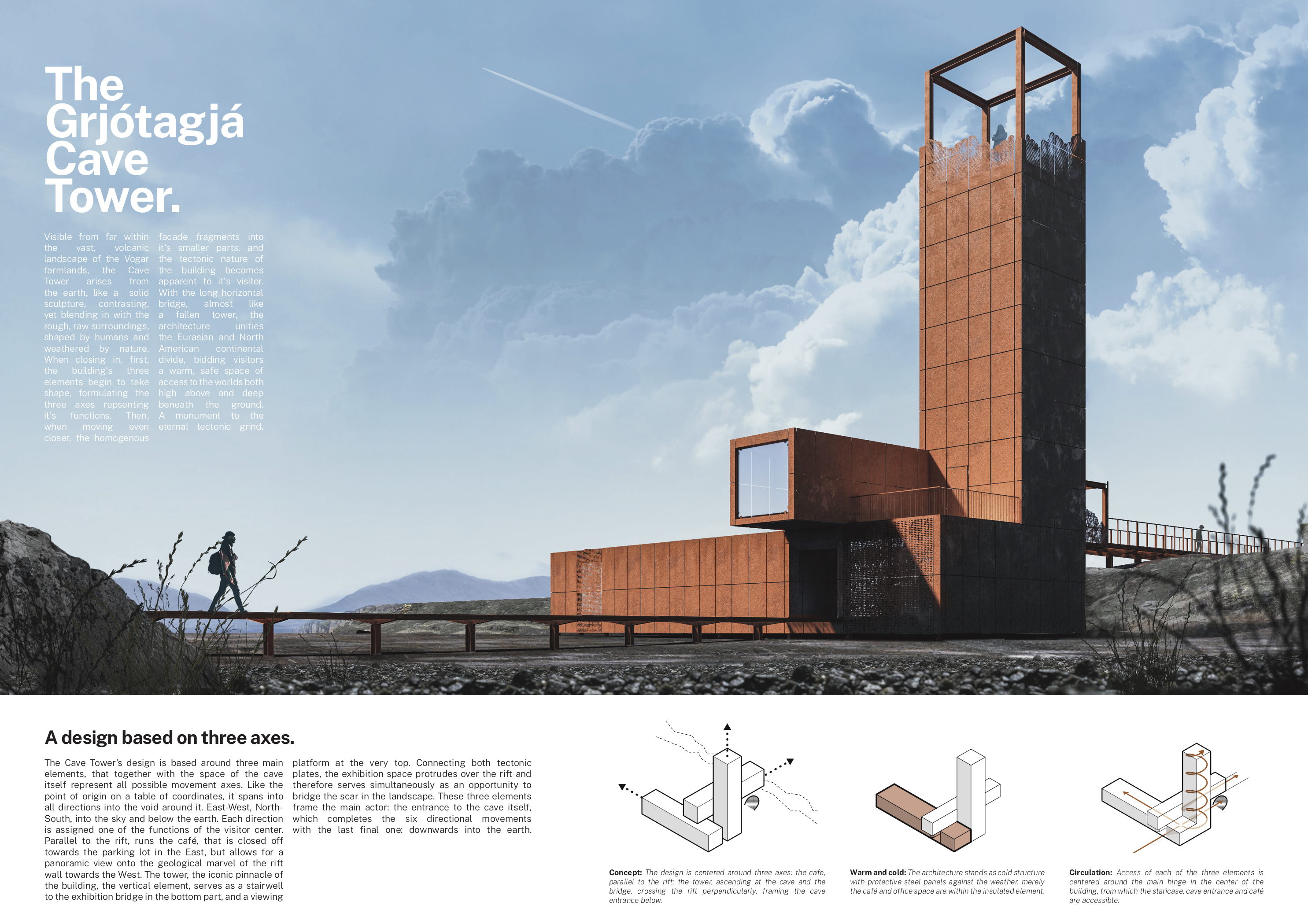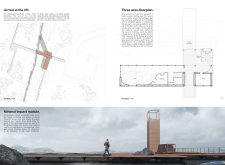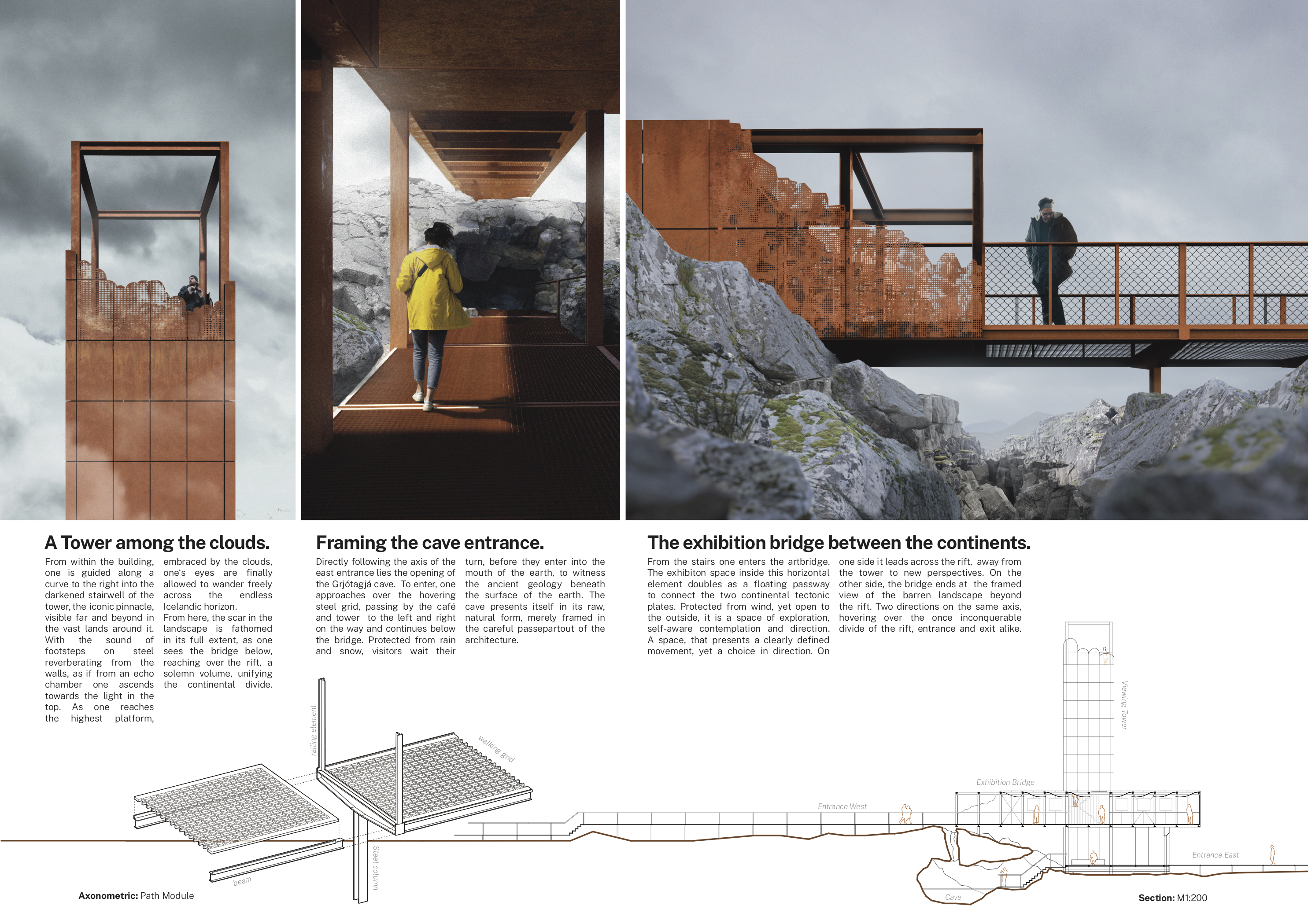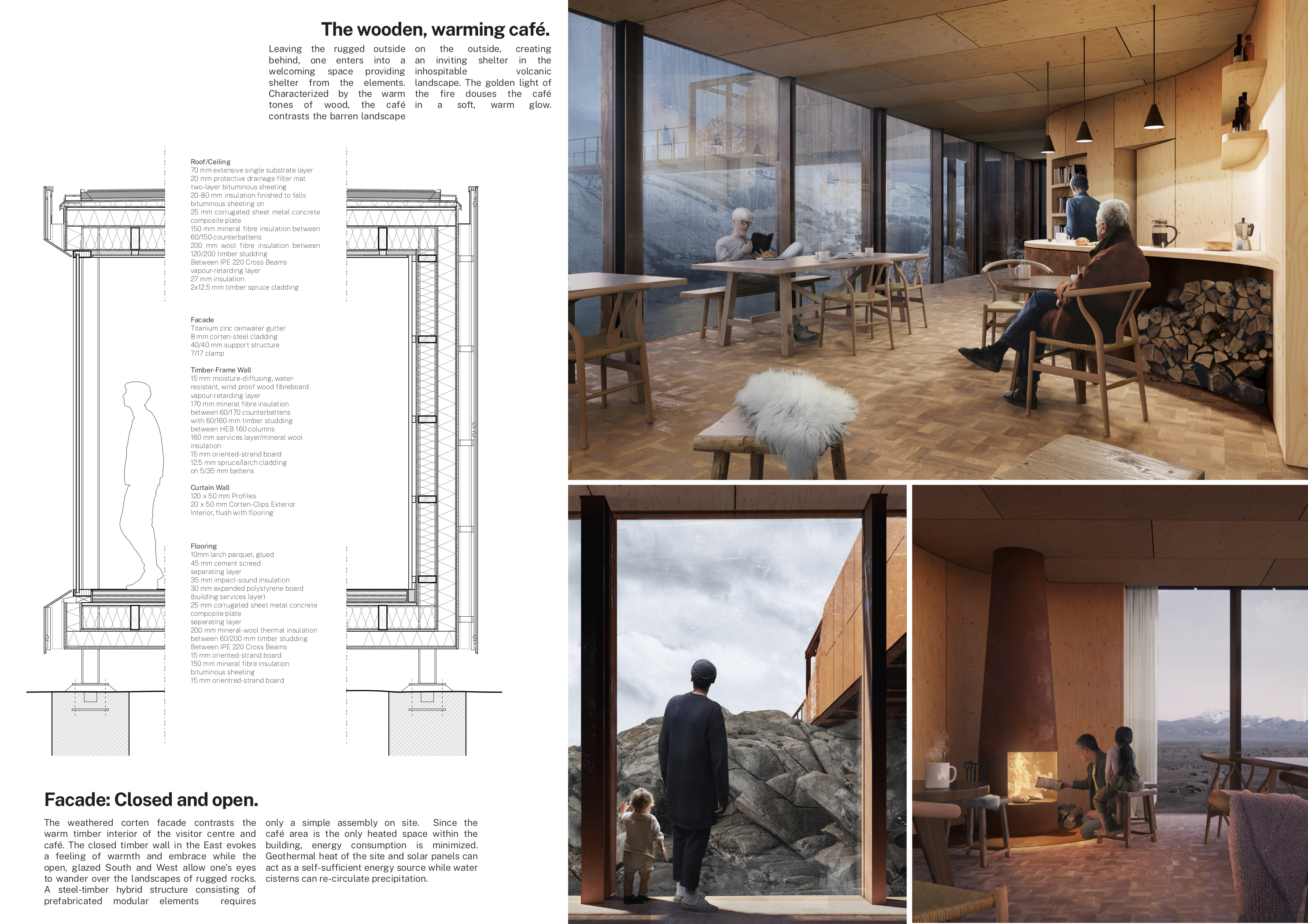5 key facts about this project
The primary function of this project is to serve as a multi-use facility, designed to accommodate various activities while fostering community engagement. It features open spaces that encourage interaction along with private areas tailored for contemplation and focused work. This duality is essential, as it reflects a growing trend in architecture that prioritizes the users' social needs alongside their individual requirements.
One of the most important aspects of the project is its materiality, which plays a crucial role in establishing a dialogue with the surroundings. The choice of materials is both practical and symbolic, reflecting a commitment to sustainability. The use of local stone provides not only structural integrity but also an aesthetic nod to the cultural heritage of the area. Additionally, elements such as timber and glass are incorporated, enhancing the project's transparency and connection to the exterior. These materials together create a warm and inviting atmosphere, promoting a sense of peace and well-being among users.
Significantly, the design employs innovative techniques to maximize natural light and minimize energy consumption. Large windows and strategically placed skylights invite daylight deep into the interior spaces, reducing reliance on artificial lighting. This thoughtful approach to natural illumination is a testament to the project’s energy-conscious design philosophy. Furthermore, the incorporation of green roofs and living walls serves both aesthetic and environmental purposes, contributing to local biodiversity and improving air quality.
The conceptual ideas driving this design also emphasize flexibility. The interior layout is characterized by movable partitions that can be reconfigured to accommodate a variety of functions, from community gatherings to educational seminars. This adaptability ensures the space remains relevant and functional over time, embracing the evolving needs of its users.
Unique design approaches are evident throughout the project in the way it addresses both social and environmental issues. The careful orientation of the building takes advantage of prevailing winds for natural ventilation, contributing to a comfortable indoor climate without excessive reliance on mechanical systems. Such considerations extend the project's sustainability objectives and reflect a broader trend within the field of architecture toward holistically responsible design.
In examining the project's architectural plans, sections, and overall layout, one can delve deeper into the thoughtful intersection of function, aesthetics, and environmental consciousness. The nuanced details, from material selection to spatial organization, highlight a comprehensive understanding of architectural design aimed at promoting user experience and community interaction. This project stands as a paragon of what modern architecture can aspire to be, embodying the principles of innovation and sustainability.
As you explore the project presentation, take the opportunity to review elements such as architectural plans, architectural sections, architectural designs, and architectural ideas to gain deeper insights into its thoughtful execution. Each component of the project offers valuable perspectives on the architectural process and highlights the significance of design in responding to contemporary challenges.


